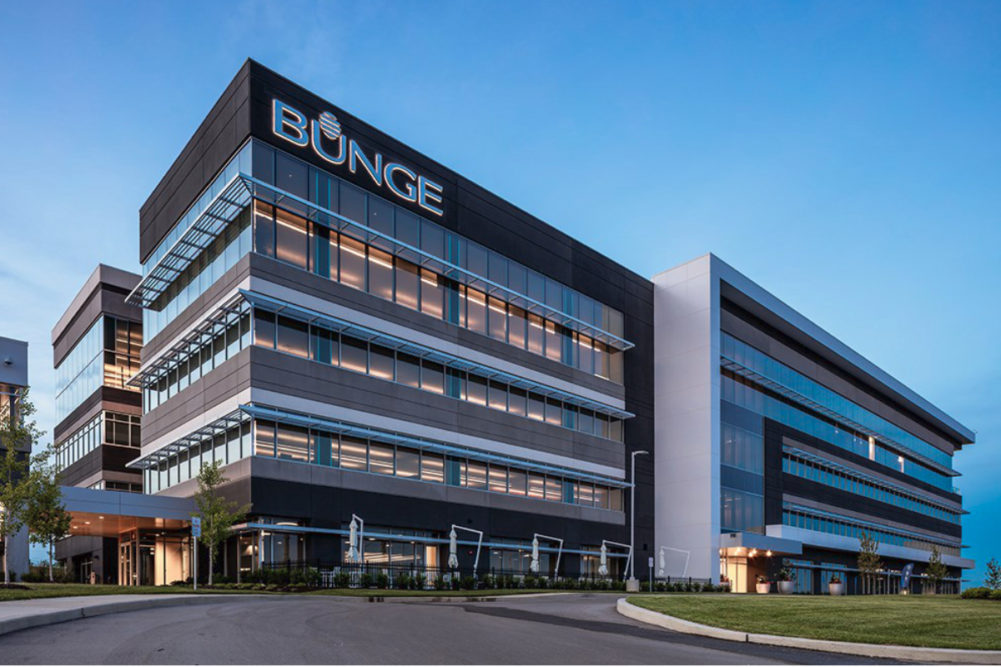ST. LOUIS, MISSOURI, US — Turnaround efforts at Bunge Ltd. have the company setting a goal to deliver baseline earnings of $5 per share at normalized soybean crush margins, Gregory A. Heckman, chief executive officer, said in a June 24 business update. He did not give a timeline for reaching the goal. The forecast came after St. Louis-based Bunge reported losses in fiscal 2019 and the first quarter of this year.
Cost-savings efforts, plant production improvements, recent transactions and share repurchases all figure into the turnaround.
Bunge expects between $50 million and $60 million of incremental savings by the end of 2021 and between $20 million and $25 million per year thereafter, said John W. Neppl, executive vice president and chief financial officer.
“Over the past year, we’ve taken a different approach to cost management than Bunge has done in the past,” he said. “We believe large-scale multiyear programs can be too disruptive as they can distract from running the business and keeping our focus on connecting farmers and customers around the world. Instead, we’re creating a culture of continuous improvement. We are driving savings opportunities from our more recent portfolio actions, operating model changes and the headquarters’ move to St. Louis. In addition, we will also drive savings by leveraging Bunge business services, our shared services operations.”
Bunge is targeting 5% annual productivity improvement in its plants, which would be up from 3% in 2019, Neppl said. Each percentage-point improvement generates between $15 million and $20 million of savings.
In the second quarter, Bunge made $100 million in share repurchases.
Heckman said Bunge has entered transactions that should generate $1.1 billion, and the company expects to reduce invested capital by $1.5 billion. Bunge last December agreed to sell its margarine and mayonnaise assets in Brazil to Seara Alimentos SA. Then in April, Bunge agreed to sell 35 US grain elevators to Zen-Noh Grain Corp.
“The sales of our US grain elevators and our Brazil margarine and mayonnaise assets illustrate our thought process,” Heckman said. “With the grain elevators, we monetized a part of our footprint that did not meet our earnings and return targets and lack strategic alignment. This transaction will allow us to retain assets that support our US export terminals and our soy processing facilities while maintaining a strong presence in the US grain marketplace.
“The sale of the Brazil margarine and mayonnaise assets will further streamline our operations, allowing us to focus on our core capabilities where we have a distinct competitive advantage and know we can win.”
African swine fever, the US-China trade situation and COVID-19 all have impacted soybean margins negatively, Neppl said. Long-term average soy crush margins were in the range of $33 to $35 per tonne, but in 2019 crush margins averaged $29 per tonne. Bunge was on track to reach $34 per tonne before COVID-19 struck, Neppl said.
“COVID-19 has clearly changed the dynamic, and it’s still too early to predict when we’ll be back to average crush margins,” he said. “However, once we get through the current disruptions, we expect to see a recovery driven by post-ASF herd rebuild, increased biofuel demand and an overall improvement in the demand for our products driven by the general economic recovery.”
Bunge suffered a loss of $1.28 billion in the fiscal year ended Dec. 31, 2019. Impairment charges within the Agribusiness and Edible Oil Products divisions combined with charges associated with the sale of its Brazilian sugar business dragged down earnings. A loss of $184 million came in the first quarter ended March 31. Temporary mark-to-market losses on forward charges had a negative impact of about $385 million.
Heckman, who joined Bunge in 2018, spoke in the business update about how the company has changed its operating model.
“We were operating like disconnected, smaller regional players, not leveraging our global scale,” he said. “We were slow to act, and we lacked accountability and transparency across the organization, and our costs (were) high. We needed to rethink how we serve our customers at both ends of the supply chain, and we needed to develop the plan as a team. So we convened a wide group of key people who’ve been integral to keeping this cash machine running all these years, people who understood the inner workings of the business, and we developed our new value chain model.”






